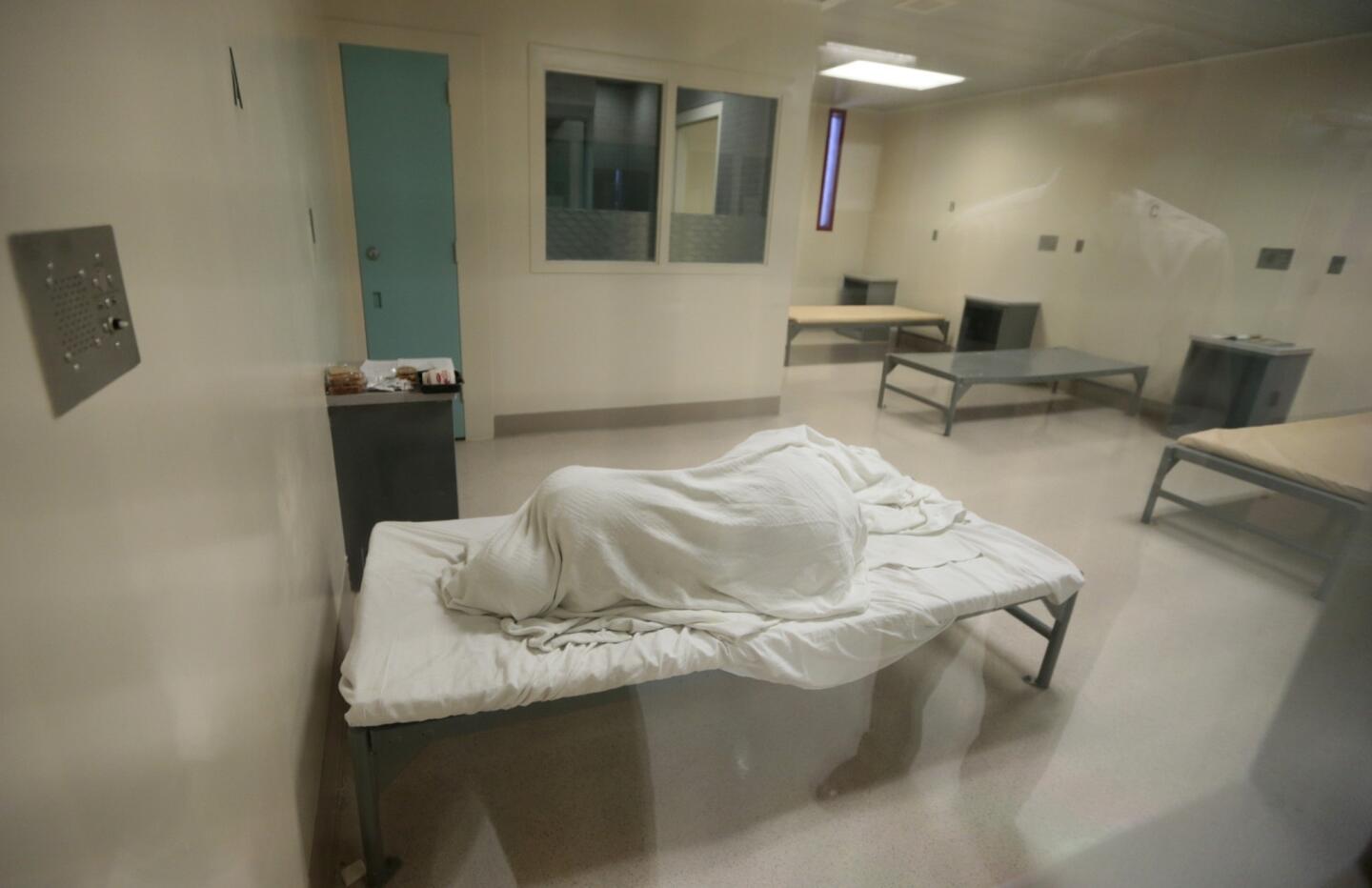The crowded Los Angeles County jail system holds thousands who are mentally ill and accused of a crime. Most have been there before.
Read Steve Lopez’s column: It’s a crime to house the mentally ill this way
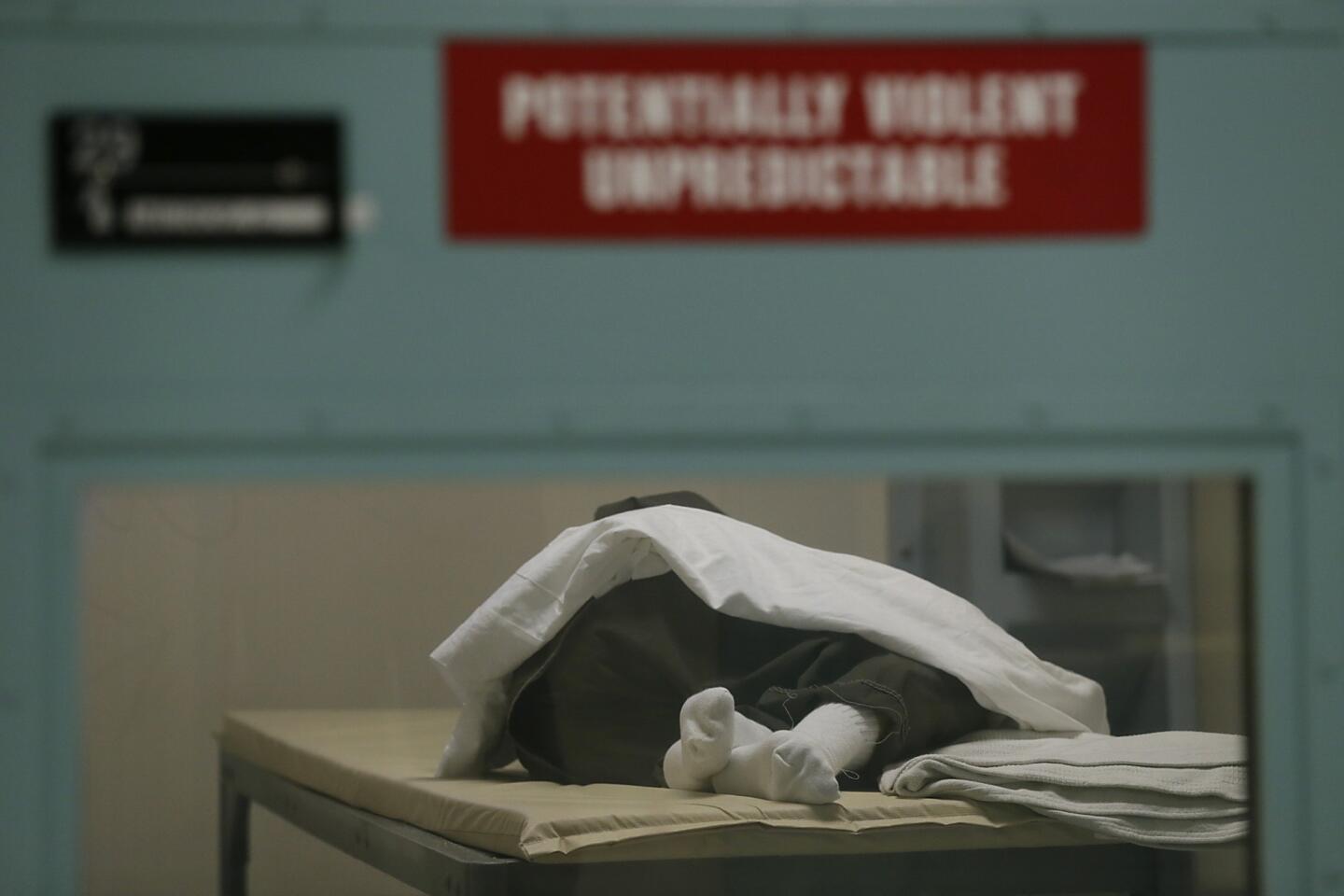
Los Angeles County Sheriff Lee Baca has said for decades that he runs the nation’s largest mental hospital. Above, an inmate sleeps in the medical unit of the Twin Towers. (Robert Gauthier / Los Angeles Times)
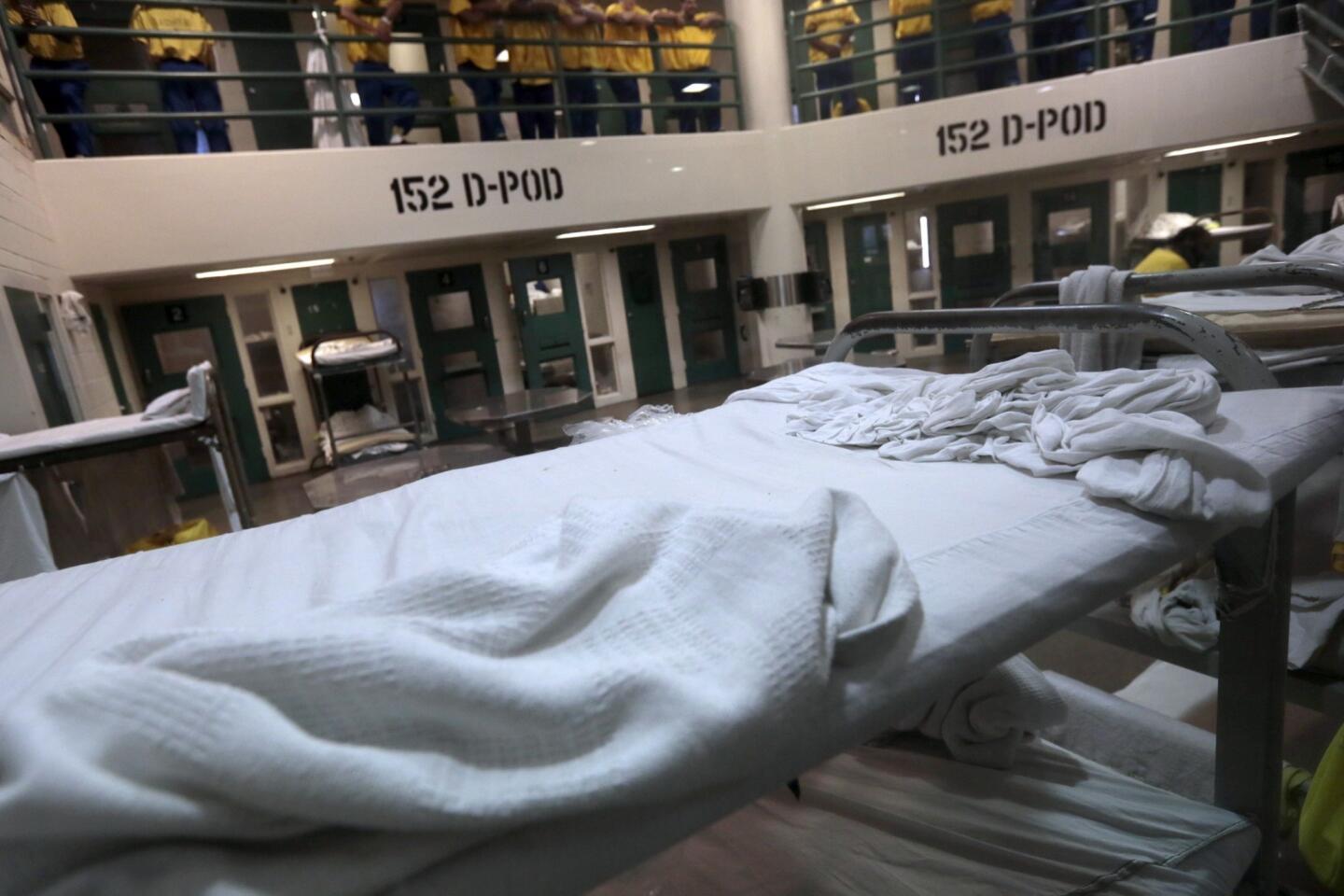
Bunk beds are spread throughout a common area at the Twin Towers. Privacy and quiet do not exist for mentally ill inmates or their jailhouse therapists. (Robert Gauthier / Los Angeles Times)
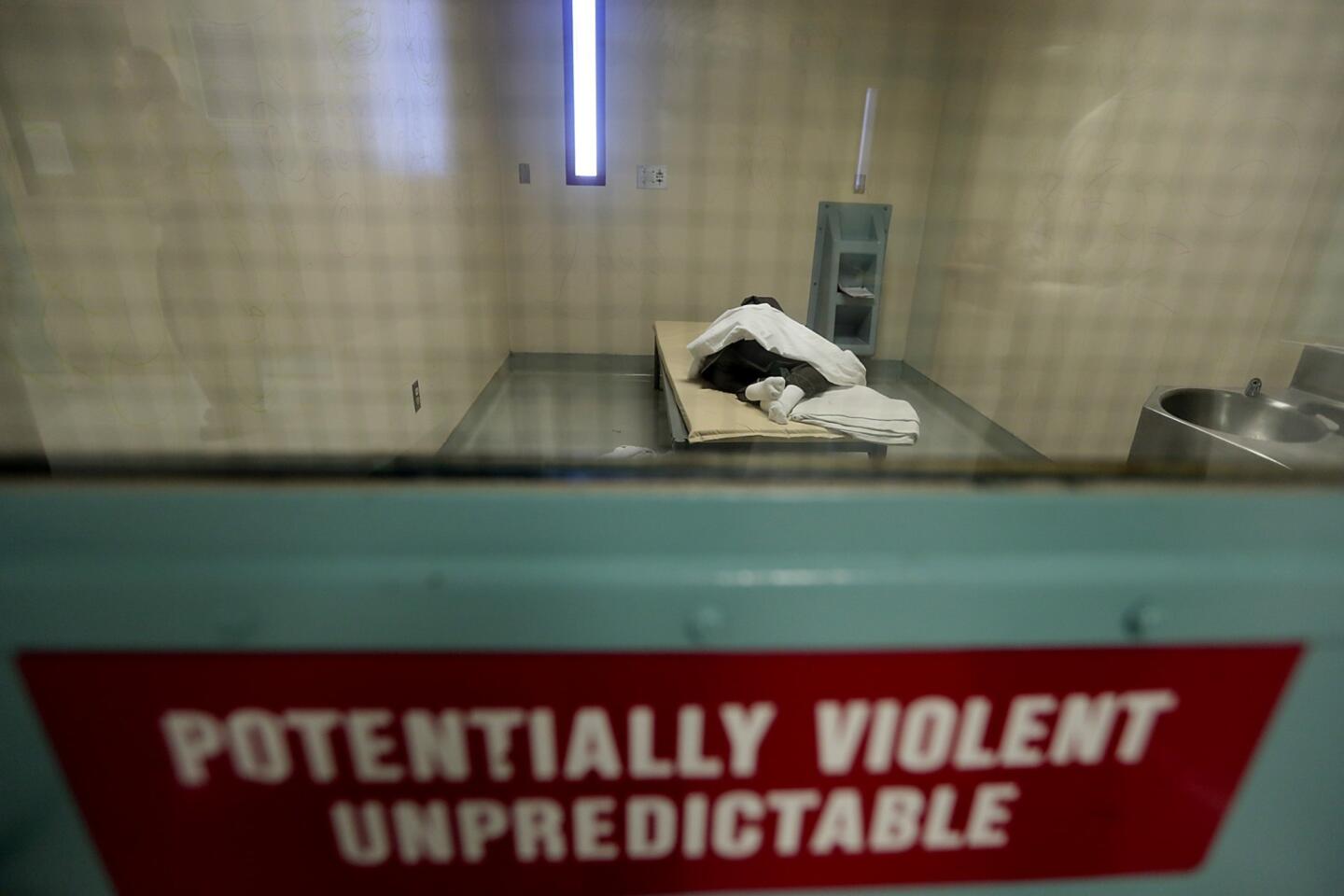
The majority of the jail’s mentally ill inmates are repeat offenders. Above, an inmate sleeps in the medical unit. (Robert Gauthier / Los Angeles Times)
Advertisement
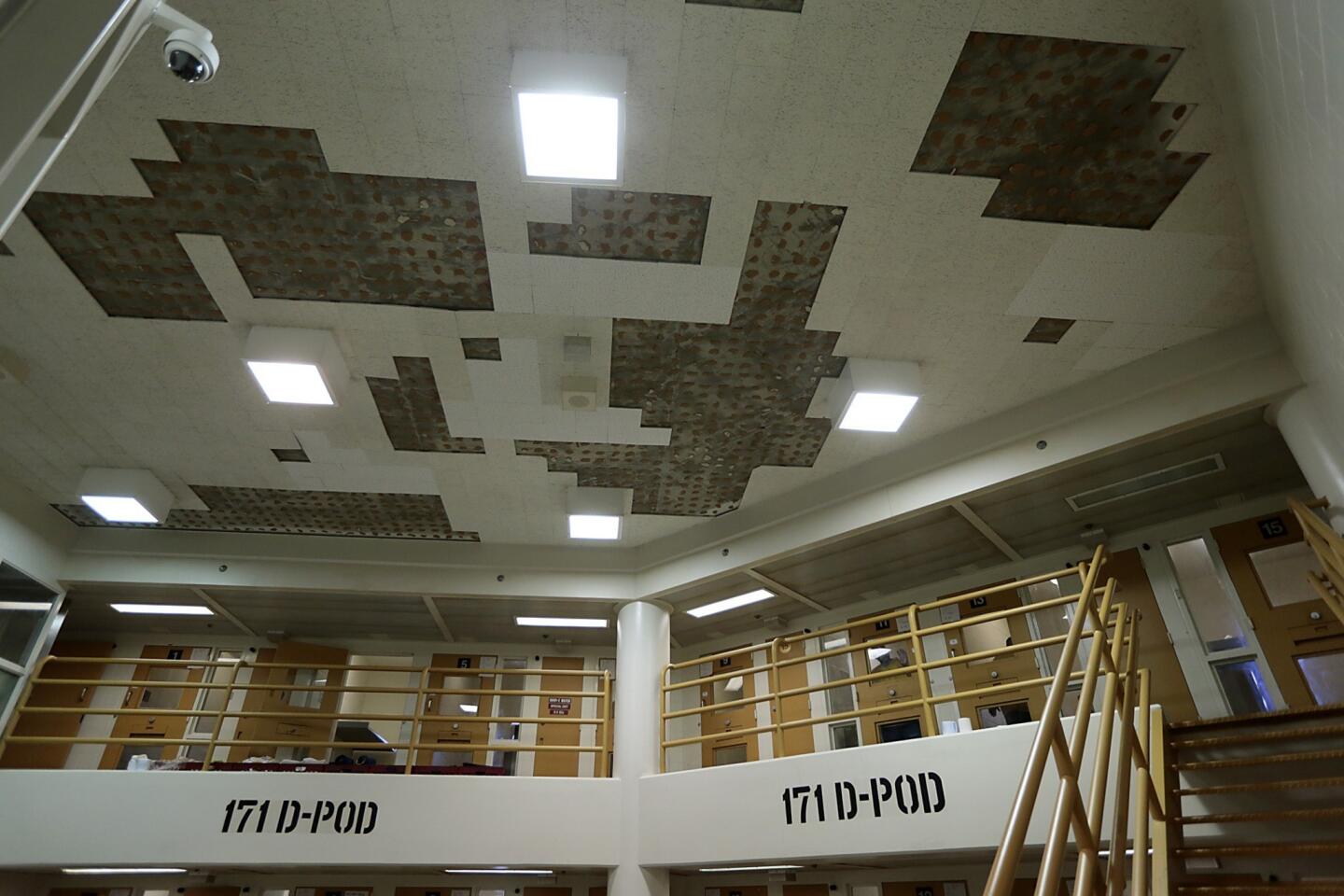
An FBI agent testified that inmates claimed deputies were assaulting them, staging fights and sometimes filming them. Above, a 2013 photo shows a section of the county’s Twin Towers Correctional Facility. (Robert Gauthier / Los Angeles Times)
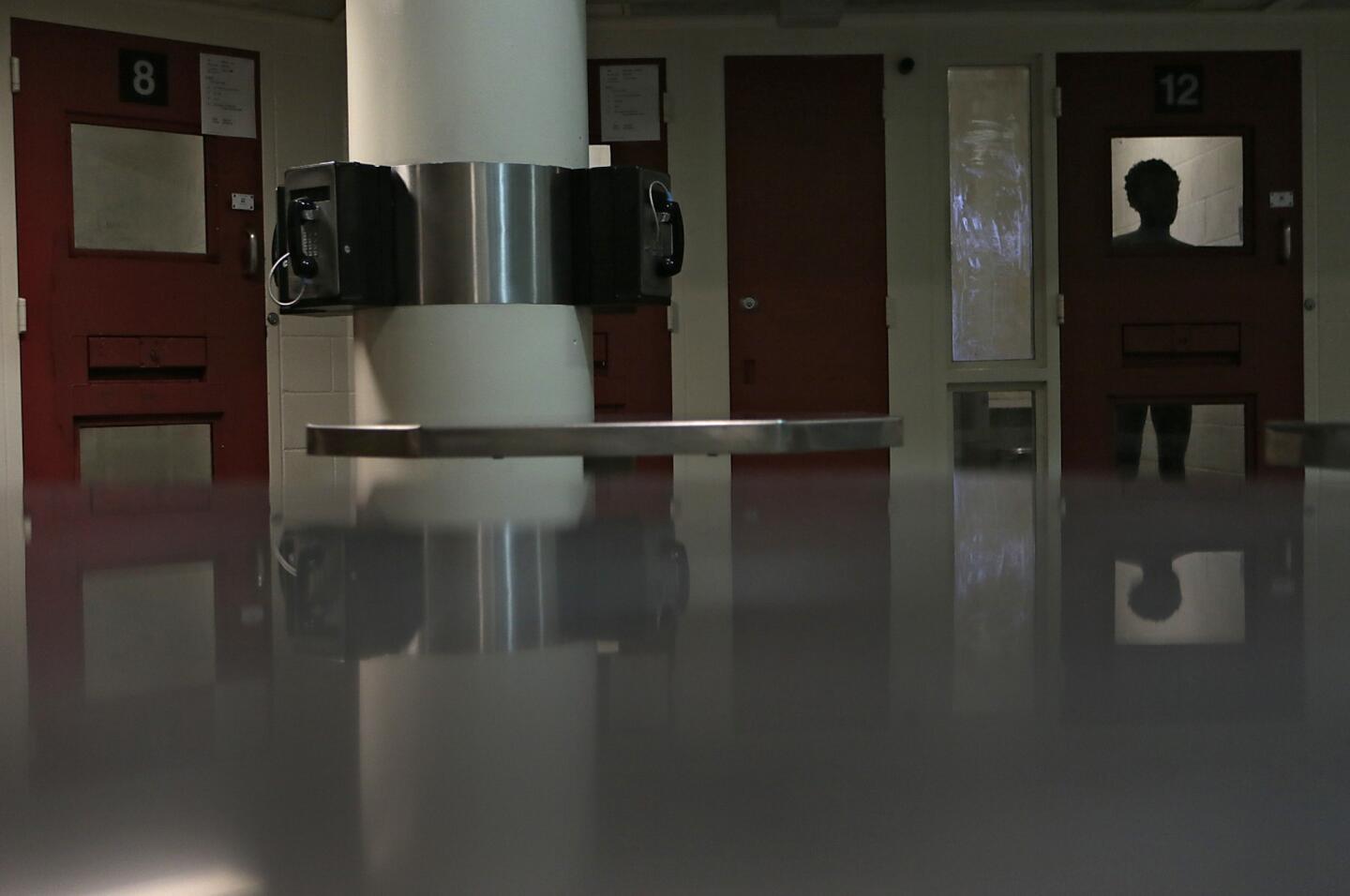
Even when inmates get counseling and medication in jail, the majority of them leave with no long-term recovery plan or supervision on the outside, so many end up right back in jail. Above, an inmate stands in his Twin Towers cell in the high observation area, which is reserved for the unstable mentally ill. (Robert Gauthier / Los Angeles Times)
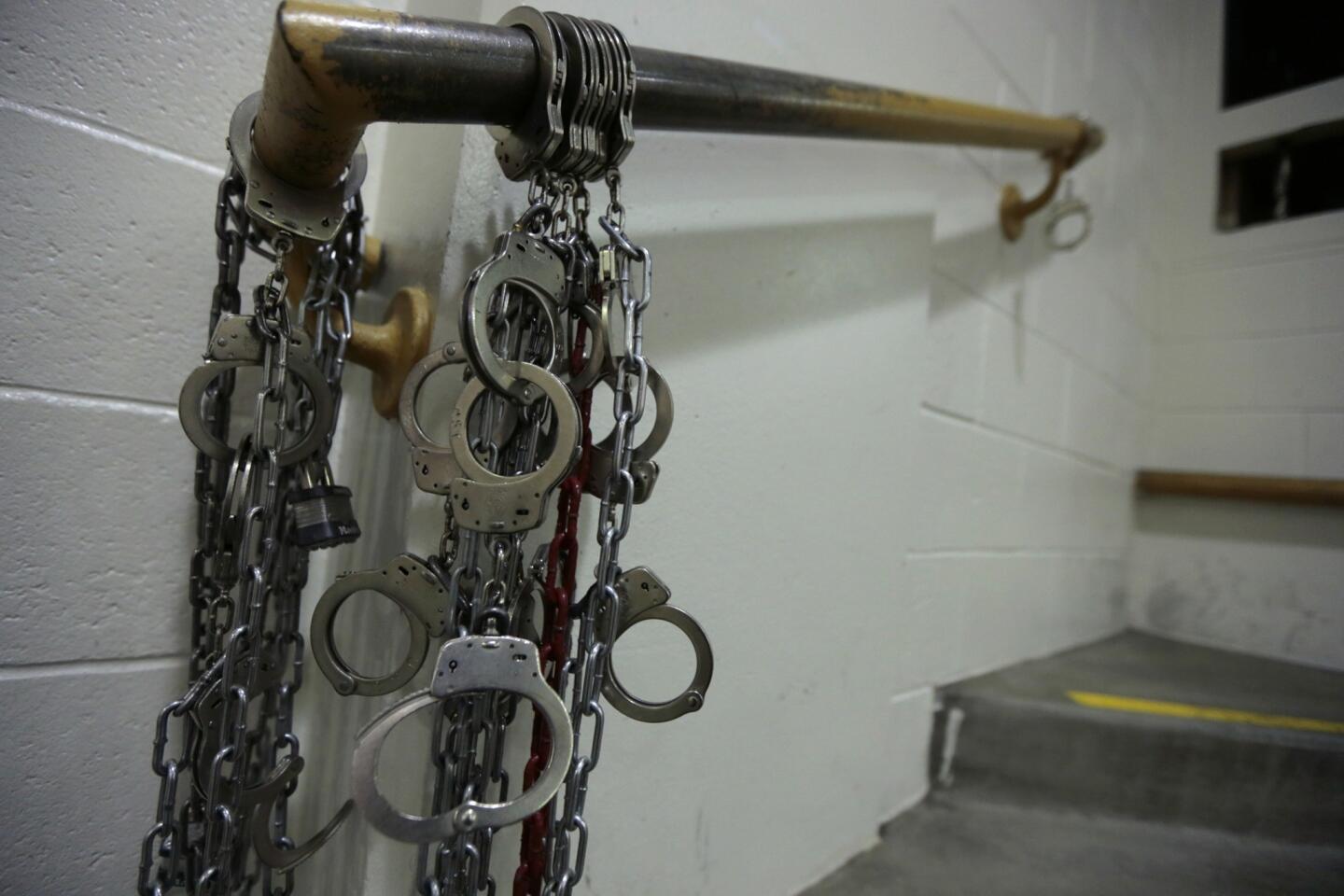
Handcuffs dangle from a rail in one of the open dorm areas of the Twin Towers. (Robert Gauthier / Los Angeles Times)
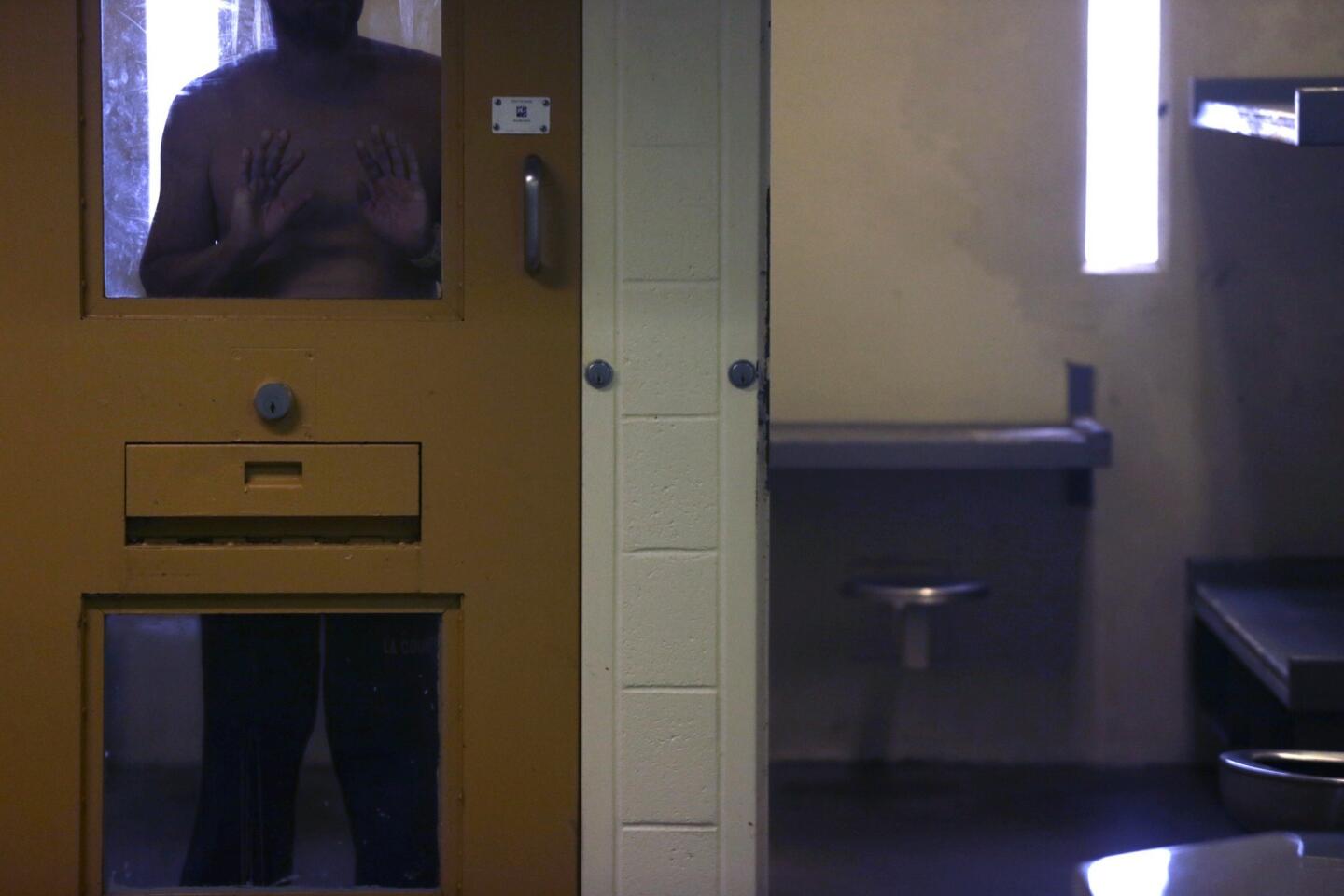
Among proposals aired at a Los Angles County Board of Supervisors meeting was one calling for construction of a jail devoted entirely to inmates with medical and mental health problems. But would that be a new direction, or the same failed strategy in a new and improved building? Above, an inmate stands in his cell in the high observation area. (Robert Gauthier / Los Angeles Times)
